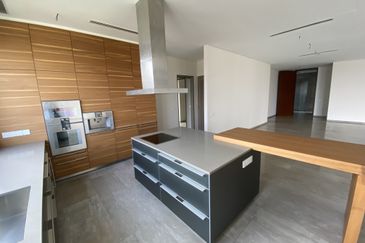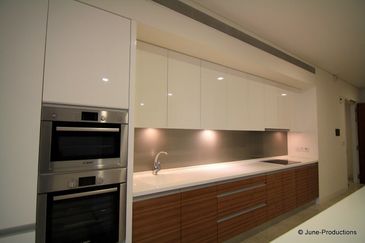
The advance of technology has made it possible for many to earn a living without the hassle of battling road congestion to get to the office. However, as idealistic as it sounds, home offices are currently more feasible for start-up companies and small business owners. It is also a means to mitigate high rental environments, where the funds saved from the lower operations cost can be reserved for future expansion.
In its simplest form, a home office can be set up with just a desk, chair and laptop. Some even make do with just a couch as their “work station”. Others prefer a proper home office to differentiate the living space from work space.
Interior design consultancy firm Linear Design managing director Cheong W Loong tells TheEdgeProperty.com that it all boils down to personal choice. “For myself, I would prefer to have an area specifically for work and filing because it cultivates a healthy habit and promotes discipline when the space is clearly designated.”

Besides this, in a home office setting, the environment offers specific areas earmarked for work and that in turn encourages focus and seriousness when it comes to the work culture, he adds.
“Furthermore, ergonomics and health are given priority with a proper office setting. Compared with working with a laptop on the sofa, working in front of a desk promotes better sitting posture, which would be better for health in the long term,” he explains.
An advantage of having a home office is the cost-savings involved, as a home office is able to do without certain components of a typical office, such as the reception, meeting room and pantry.

Essentially, one just needs a work bench or a decent-sized work table to create a home office environment. A work top can double up as meeting table. “You only have to ask yourself, in a worst-case scenario, how many people will need to be seated together at that table, and that will determine the size of that work bench,” recommends Cheong.
Currently, there are duplex SoHo (Small-office Home-office) units that are specially designed for use as home offices whereby the private room and working space are separated into two adjoining floors.
For normal houses or condominiums, there are ways to demarcate a work space, like how five-star hotels do at their lobbies or lounge areas to make them welcoming for business meetings.

For people who are looking at creating their own work space at home, Cheong has four suggestions:
1. Use the shelf area as your work space
Move your table near to the shelves in your living room. The shelves could be the place for your filing or work-related reference books and materials. When necessary, the sofa could be the discussion area for your clients or team members.
2. Make the living room a showcase for your works
For individuals who work in the design or art industry, they could turn the living room into an art gallery showcasing their works.
Meanwhile, for the work-from-home individuals who are required to meet up with clients often, a clean, organised and tastefully decorated living room could give clients a better impression.
3. Create your own nook with your favourite furniture
A home office does not necessarily have to look like any typical office. It can feature a modern minimalist or oriental theme. All you need is just to spruce up a corner with your preferred furniture and paintings.
4. Use a multi-functional dining table
When space is an issue, the dining table can double up as a work table or discussion area. It will be more conducive as a working space if the dining room is designed in a modern contemporary style and furnished with bright lights.
This story first appeared in TheEdgeProperty.com pullout on June 9, 2017. Download TheEdgeProperty.com pullout here for free.
TOP PICKS BY EDGEPROP

Biji Living (Seventeen Residences)
Petaling Jaya, Selangor

Palm Hill Residence 2 (Residensi Bukit Palma 2)
Cheras, Selangor

Taman Bukit Senawang Perdana
Seremban, Negeri Sembilan






















